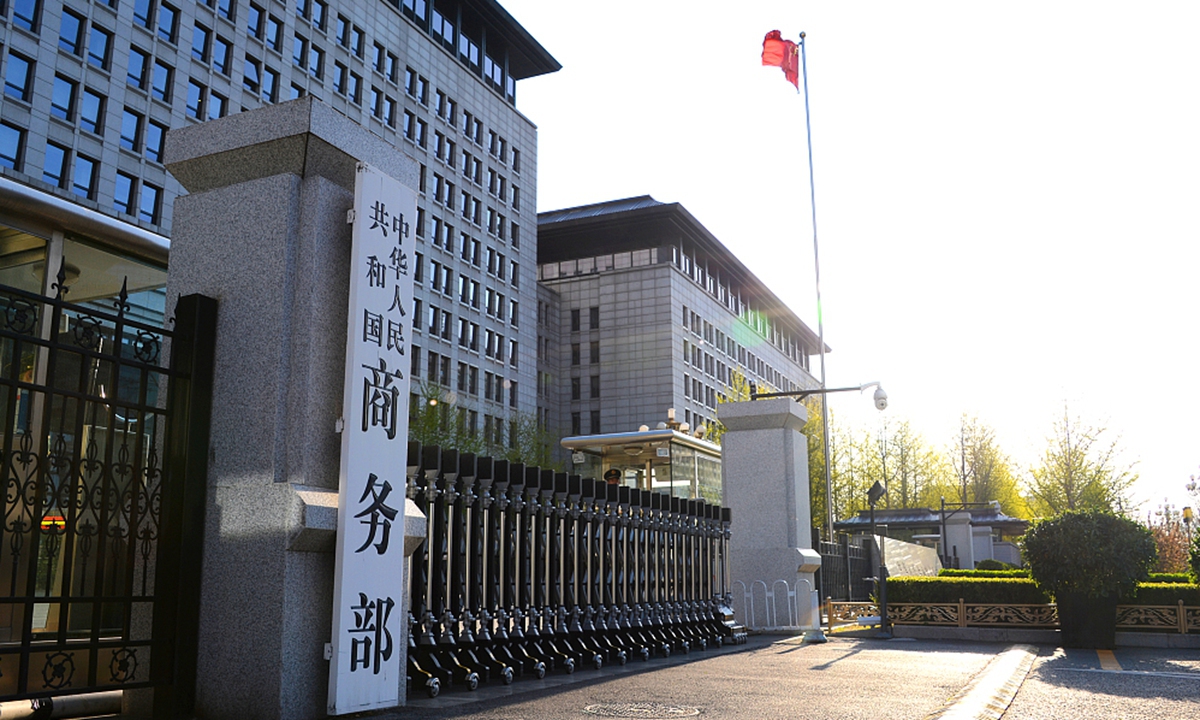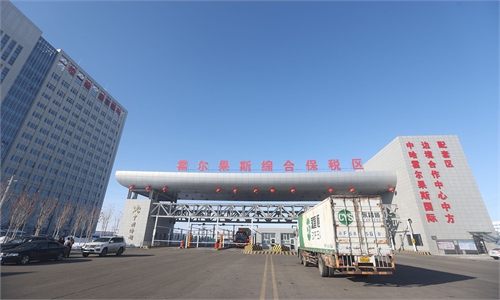
The Ministry of Commerce Photo: VCG
China's Ministry of Commerce (MOFCOM) recently issued a 164-task list to guide the high-quality development of the country's pilot free trade zones (PFTZ) from 2023 to 2025, as the nation remains committed to widen its opening-up to the world, according to the ministry's statement on Sunday.
Taking the 10th anniversary of the construction of the first PFTZ in China as an opportunity, MOFCOM and related local governments and departments drew up the task list. Each PFTZ has been assigned with seven to 10 tasks, including major institutional innovation, key industries development, important platform construction and other major projects, the statement said.
The list mainly focuses on three aspects. For starters, it plans to strengthen classified guidance, aiming to promote precise positioning and policy implementation of each PFTZ so as to achieve differentiated and personalized development, MOFCOM noted.
For instance, the Guangdong Pilot Free Trade Zone will be supported to deepen cooperation with Hong Kong and Macao special administrative regions in the fields of trade, investment, finance, legal services, and mutual recognition of professional qualifications, and promote the integration of rules and mechanisms with Hong Kong and Macao.
The list also aims to promote reform and innovation of the PFTZs. For instance, the Shanghai Pilot Free Trade Zone will be supported to create a world-class business environment, while the Zhejiang Pilot Free Trade Zone will receive support to develop the digital economy.
In addition, MOFCOM plans to strengthen integrated development of the PFTZs by giving them integrated objectives and tasks. Each can continuously improve supporting policies, strengthen the integration, coordination and efficiency of major institutional innovation systems, and form more replicable institutional innovation cases, according to the statement.
Taking the Tianjin Pilot Free Trade Zone for example, it will be supported to build a world-class leasing industry cluster. The Shandong Pilot Free Trade Zone will be guided to carry out marine economic innovation, while the Jiangsu Pilot Free Trade Zone could speed up the building of biomedical industrial clusters.
The first PFTZ in China was set up in Shanghai in 2013 and the number has now grown to 21, "which represents the new high ground for the country's reform and opening-up," according to Xinhua News Agency.
The speedy expansion of the PFTZs demonstrates China's firm determination to open wider and share development opportunities with the rest of the world, Xinhua said.
"As the pioneers for further opening up, the PFTZs enjoy a higher degree of opening up than that of other areas in China. For instance, the original 190 items on the negative list for the market access of foreign investment for the PFTZs were reduced to 27 in 2021," MOFCOM said in its Foreign Investment Guide in 2022.
With less than 0.4 percent of the land area in China, the PFTZs received 18.5 percent of the total foreign investment and 17.3 percent of total imports and exports for China in 2021, MOFCOM data showed.


